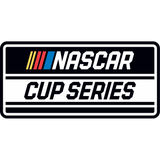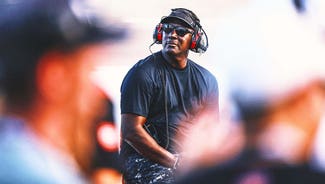
Wood family continues NASCAR tradition
Eddie Wood chuckles softly, his eyes still filled with that small boy’s awe.
Oh yeah, he can remember going to the race track and seeing his daddy win races. Before he was co-owner of his father’s legendary Wood Brothers Racing team, before he pitted cars and talked with sponsors and witnessed first-hand the explosion in the sport’s possibility, he was just a son sitting in the stands with his mother, watching his dad race.
“It was big,” Wood says. “It was big.”
Those were the days when Glen Wood was winning races at places like Bowman Gray Stadium when he was building a team and etching his name among the sport’s greats. At that time, Wood Brothers Racing was a growing family-owned operation competing from his hometown of Stuart, Va.
Since then, the sport has changed dramatically. The Wood Brothers adjusted with it, but the heart of the team remains the same. It’s still a family business. They still have a place in Stuart, though they’ve also given a nod to progress and have a shop in the Charlotte, N.C., area. They still compete, these days returning to their roots and running a limited schedule once more. And they still have some of the best to have taken to the track appearing in their cars.
They’re the kind of team that reminds people both of what NASCAR once was and what it has become.
The team started with brothers Glen and Leonard Wood and is now primarily run by Glen’s children, Eddie, Len and Kim Hall. The team has made 1,361 starts in NASCAR, winning 97 races while posting 518 top-10 finishes, 336 of them top fives, and has enjoyed victories with some of NASCAR’s greatest drivers. And they’ll still be racing in 2011.
They’ve changed their model of business from time to time, shifting from running part time to full time and back to a limited schedule, but while other teams have taken on investors and partners, they’ve remained a true family business. They’ve done it with dignity and grace, bringing both competitiveness and class to the sport.
“We’re proud of the legacy that Daddy has started and we want to keep it up,” Kim said. “We want to keep it family. It is something to be proud of, and we look to maintain that.”
From the beginning
Before he was a NASCAR Hall of Fame nominee, Glen Wood was just another driver/owner trying to make it in the sport. He and his brother, Leonard, soon found themselves immersed in the world of stock-car racing.
They had friends who were racing and one time Glen got on the track in his own car and kept up.
“He figured if he had a race car he might do well,” Leonard Wood said.
And then it started. After some debate among friends, Glen was tabbed to drive the car. Curtis Turner’s engine man helped them with that first one. Leonard was soon building the engines and became one of the best in the business.
“I was 15, Glen was 25,” he said. “I stayed Glen’s 15-year-old brother for like 10 years according to the media. You know, ‘Glen’s 15-year-old brother is chief mechanic.’ Then we began doing quite well at Bowman Gray,” Leonard Wood says. “He was track champion there, then North Carolina state champion.”
Glen Wood, now 85, made 62 starts in what is now the Cup series, earning four wins with 34 top-10 finishes, 22 of them top fives. He ran another 85 races in the Convertible Series, winning five times and earning 62 top-10 finishes, 43 of them top fives. And then he turned the car over to a series of top drivers over the years.
Not his brother, though. Leonard was and is content to work on the mechanical side of the sport. He was notorious for both the strength of his engines and for revolutionizing pit stops, working on each aspect of those to help the team gain speed. His efforts were so successful that the Wood Brothers shifted gears in 1965 and went to the Indianapolis 500, where they pitted Jim Clark’s winning car.
Leonard Wood never wanted to take a turn behind the wheel, though — except when he was tuning the cars.
“I used to go to Martinsville and try them out, work on carburetors and check the acceleration and all that,” Leonard Wood said. “One time I was at Martinsville and I was checking this carburetor and I wasn’t really concentrating on running it around the track, I was just going through the corner and accelerating it. . . . I made a change which was quite a bit better, but the downside was it had so much power it broke it loose and spun the thing at like a 180-degree angle and I’m getting ready to wreck it, I’m thinking, but I finally saved it.”
He left the driving to men like Curtis Turner, Joe Weatherly, Junior Johnson, A.J. Foyt, Marvin Panch, Neil Bonnett, Buddy Baker, Dan Gurney, Dale Jarrett, Ricky Rudd and Bill Elliott, all of whom have competed for the Wood Brothers. The team often raced only a part-time schedule, but it still was a contender.
Eddie and Len Wood remember it well. They literally grew up in the sport.
Eddie, 58, began heading to the shop to work when he was in high school.
“You’d paint, clean up, whatever,” he said. “Just being there was the deal.”
He started going to the races as a member of the team in the late 60s. He worked in the pits for years and then would head back to work in the shop. At the time, it was mostly just the family working on the cars on a daily basis and getting them ready to go to the track.
Len, 54, remembers going to Daytona in the 60s, then beginning to work in the shop in his teens. He was around 15 when he started helping out.
“I remember keeping up with my hours, making a dollar an hour or something like that, just sweeping the floor,” he said.
Then he started dismounting tires and other jobs, eventually working with the engines, the aspect of the car he most enjoyed. Today, he focuses more in that area while Eddie’s role is more with the chassis and Kim works behind the scenes. Eddie and Len, as well as Leonard, pitted the car for years as well.
And then there was the traveling. Unlike today, when team members fly to races while the transporter drives cross country, in those days they did it all.
“I can remember riding in a pickup truck hauling the Modified,” Eddie said. “. . . Then we got the kind you roll up on the back. I drove those trucks, not the early, early ones but in the mid-70s I did.”
Then he and Len started making those long driving trips.
“You’d race all day, then load your stuff up and head out home from Riverside and not stop until you got home,” Eddie said, remembering a race in the 70s when he and another team member made the trek from Riverside in California to the Virginia shop after a race. ". . . We left there and had our Purolator uniforms; when we got home, we still had our Purolator uniforms on.”
He and Len made the best time possible on those trips.
“We didn’t stop for anything but fuel,” Eddie said. “You’d fuel and eat — our truck was gas, it wasn’t diesel. You’d pull into a self-serve thing, stick a hose in each side of it and somebody run in and get something to eat if you’re lucky enough to have food there, and whatever time that took to get it and pay for it and go and you were gone. That and weigh stations and that was it. A lot of beans and a lot of Vienna sausages. It was fun, though.”
Kim, meanwhile, worked in the shop, slowly taking over the books from her mother, Bernece, over the years. All of them have witnessed incredible changes in the sport over the years.
Len has watched much of the manual labor they did on engines and other parts transition to computers and built parts. He still works alongside Leonard Wood and learned to use a slide rule from Hall of Famer Bud Moore. He knew how to do the calibrations to take advantage of the chassis dyno and other engineering aspects of the cars.
“When we got our first calculator, it was like a Texas Instruments calculator, I won’t say it was as big as a Sears and Roebuck catalog, but like half as big,” Len said. “And it cost like $110. It was like, 'How are we ever going to afford that?' But looking back, that was kind of the start of the change. Now you put a calculator on your watch almost. At least on your phone.”
They’re the last of their breed, the family teams making their way in the sport after more than 50 years of competing.
Yet, despite the changes they’ve seen and their years working in the sport, they still carry that love for NASCAR.
“When they sing that national anthem and (the drivers) crawl in them, it’s still kind of the same,” Eddie said. “That’s the cool part.”

